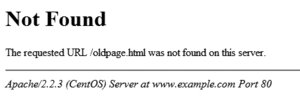Link rot
Link rot is the process by which hyperlinks on the internet gradually become broken or dead as web pages are moved, restructured, or deleted. This phenomenon is a significant issue for the preservation of digital content and the reliability of online resources.
Causes[edit | edit source]
Link rot can occur due to several reasons:
- **Website restructuring**: When websites undergo redesigns or restructuring, the URLs of pages may change, leading to broken links.
- **Content deletion**: Web pages or entire websites may be deleted, resulting in dead links.
- **Domain expiration**: If the domain name registration expires and is not renewed, all links associated with that domain become invalid.
- **Server issues**: Temporary or permanent server issues can render links unusable.
Impact[edit | edit source]
Link rot affects various aspects of the internet:
- **Academic research**: Scholars and researchers rely on stable links for citations. Link rot can undermine the credibility and verifiability of academic work.
- **Legal documents**: Legal references and documents that contain broken links can lead to misinformation or incomplete information.
- **User experience**: Broken links can frustrate users and reduce the usability of websites.
Prevention and Mitigation[edit | edit source]
Several strategies can be employed to prevent or mitigate link rot:
- **Persistent identifiers**: Using persistent identifiers like DOIs (Digital Object Identifiers) can help maintain stable links.
- **Web archiving**: Services like the Wayback Machine archive web pages, allowing users to access historical versions of web content.
- **Regular maintenance**: Website administrators can regularly check and update links to ensure they remain functional.
- **Redirection**: Implementing proper 301 redirects can guide users from old URLs to new ones.
Related Concepts[edit | edit source]
See Also[edit | edit source]
References[edit | edit source]
External Links[edit | edit source]
Search WikiMD
Ad.Tired of being Overweight? Try W8MD's physician weight loss program.
Semaglutide (Ozempic / Wegovy and Tirzepatide (Mounjaro / Zepbound) available.
Advertise on WikiMD
|
WikiMD's Wellness Encyclopedia |
| Let Food Be Thy Medicine Medicine Thy Food - Hippocrates |
Translate this page: - East Asian
中文,
日本,
한국어,
South Asian
हिन्दी,
தமிழ்,
తెలుగు,
Urdu,
ಕನ್ನಡ,
Southeast Asian
Indonesian,
Vietnamese,
Thai,
မြန်မာဘာသာ,
বাংলা
European
español,
Deutsch,
français,
Greek,
português do Brasil,
polski,
română,
русский,
Nederlands,
norsk,
svenska,
suomi,
Italian
Middle Eastern & African
عربى,
Turkish,
Persian,
Hebrew,
Afrikaans,
isiZulu,
Kiswahili,
Other
Bulgarian,
Hungarian,
Czech,
Swedish,
മലയാളം,
मराठी,
ਪੰਜਾਬੀ,
ગુજરાતી,
Portuguese,
Ukrainian
Medical Disclaimer: WikiMD is not a substitute for professional medical advice. The information on WikiMD is provided as an information resource only, may be incorrect, outdated or misleading, and is not to be used or relied on for any diagnostic or treatment purposes. Please consult your health care provider before making any healthcare decisions or for guidance about a specific medical condition. WikiMD expressly disclaims responsibility, and shall have no liability, for any damages, loss, injury, or liability whatsoever suffered as a result of your reliance on the information contained in this site. By visiting this site you agree to the foregoing terms and conditions, which may from time to time be changed or supplemented by WikiMD. If you do not agree to the foregoing terms and conditions, you should not enter or use this site. See full disclaimer.
Credits:Most images are courtesy of Wikimedia commons, and templates Wikipedia, licensed under CC BY SA or similar.
Contributors: Prab R. Tumpati, MD

